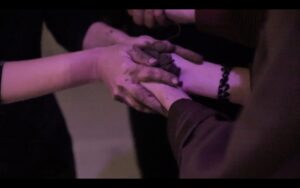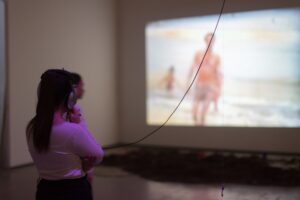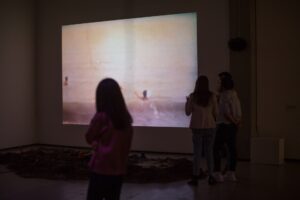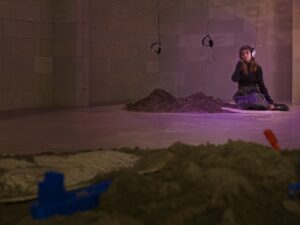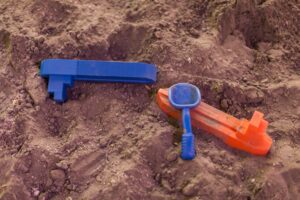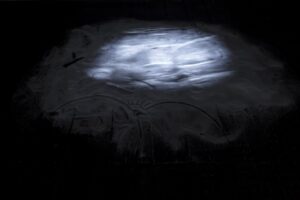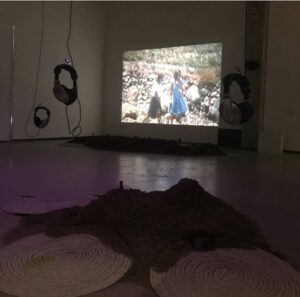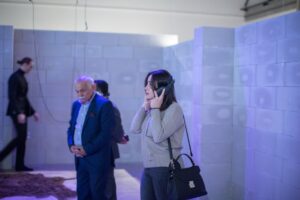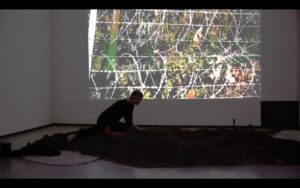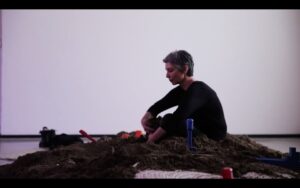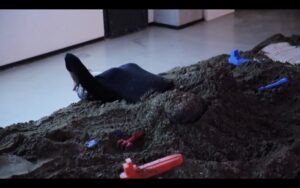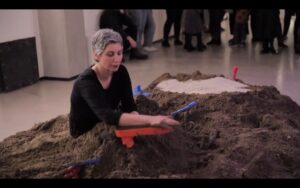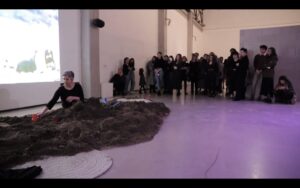Le Corps Fluide
- Installation
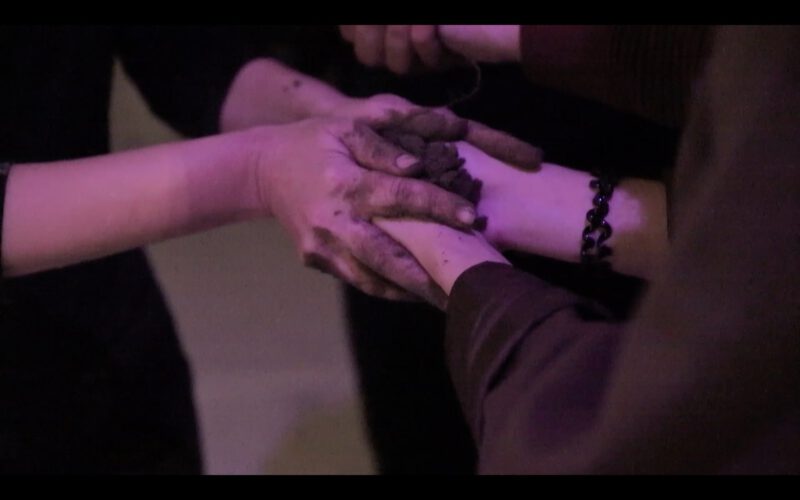
Sometimes, a smell, a sound or a feeling on skin brings us out of time and space. A familiar memory troubles our sensation of the present time.
The idea of this project came mainly from a physical and intimate feeling that I experienced during my visit to public beaches of the Caspian Sea in Azerbaijan. I went to the Caspian Sea which I know so well from the memories of my childhood. But this time it was from a different point of view, it was from another beach beyond the frontiers of my country. I felt an immediate and sudden emotion inside my body.
Where exactly is our perception of time and space hidden in our body? What is their influence on our body? What are their impacts on our daily life? How do we find our own way of healing by forgetting/changing/recreating our memories? Those were questions that came to my mind.
From this fluid border of the Caspian Sea I then came to the border between Iran and Azerbaijan which is another fluid water border, the river Aras, which ends in that sea. This river has lots of stories. The inhabitants of both sides of this river went through a sudden separation in only one day. How incredible could that be. Entire families were suddenly separated in WWII, and forced to live on different sides of this frontier. And this separation lasted for more than 50 years. I tried to get some stories of the people living next to the river. Stories that never be narrated in the big written History.
The installation “Le corps fluide/The fluid body” has two conceptual parts; one part questioning how memory works and what it functions. How it brings us beyond any physical border and free us from time and space limits.
The second part is a research about people separated by a geopolitical frontier between two Azerbaijan and how the memory left by their beloved ones was the only connection between them.
The first piece of this installation is a sound and video projected on an Island made by salt. This installation explores the notion of inner/intimate and collective memory.
– A video made from the sonography of my breast shows the inner waves which could be any kind of fluid.
-A repetitive sound of waves made by daily life utensils (like dishwashers) stress this fine ambiguity between inside and outside body.
-Headphones hanging from the ceiling play the voices of three specialists (in Farsi translated in English and Azari). A philosopher, a psychologist and a physicist talk about the experience of memory, displacement, change or transformation in time and space with three different point of view.
The second piece is a video made by family super8 footage of sixties from the Iranian side of Caspian Sea projected on a wall. Beside this movie there is another big island of sand that came from the Caspian Sea beach. On this island, we can see some toys and moles in the form of oil-cargo. People can play with them.
In the third piece of the installation headphones plays interviews (in Farsi, Azari, translated in English) from people of Aras border. An audio-documentary made during my research in summer and fall 2019, from part to part of the river.



